Casio G-Shock GWF-1035F-1DR Handleiding
Bekijk gratis de handleiding van Casio G-Shock GWF-1035F-1DR (8 pagina’s), behorend tot de categorie Horloge. Deze gids werd als nuttig beoordeeld door 36 mensen en kreeg gemiddeld 4.3 sterren uit 18.5 reviews. Heb je een vraag over Casio G-Shock GWF-1035F-1DR of wil je andere gebruikers van dit product iets vragen? Stel een vraag
Pagina 1/8

Operation Guide 3184
1
MO1409-ED
Getting Acquainted
Congratulations upon your selection of this CASIO watch. To get the most out of your
purchase, be sure to read this manual carefully.
Warning!
•The measurement functions built into this watch are not intended for taking
measurements that require professional or industrial precision. Values produced
by this watch should be considered as reasonable representations only.
•The Moon phase indicator and tide graph data that appear on the display of this
watch are not intended for navigation purposes. Always use proper instruments
and resources to obtain data for navigation purposes.
•This watch is not a precision instrument for calculating low tide and high tide
times. The tide graph of this watch is intended to provide a reasonable
approximation of tidal movements only.
•Note that CASIO COMPUTER CO., LTD. assumes no responsibility for any
damage or loss suffered by you or any third party arising through the use of this
product or its malfunction.
Keep the watch exposed to bright light
The electricity generated by the solar cell of the watch is
stored by a rechargeable battery. Leaving or using the
watch where it is not exposed to light causes the battery
to run down. Make sure the watch is exposed to light as
much as possible.
•When you are not wearing the watch on your wrist,
position the face so it is pointed at a source of bright
light.
•You should tr y to keep the watch outside of your sleeve
as much as possible. Charging is reduced significantly if
the face is covered only partially.
l
l
l
l
l
l
l
l
l
l
l
Bright Light
Solar cell
All
functions
enabled
LEVEL 1
LEVEL 2
LEVEL 3
LEVEL 4
Charge
Rechargeable battery
Bright Light
Electrical
energy
Solar cell
(Converts light to
electrical power.)
LEVEL 1
LEVEL 2
LEVEL 3
LEVEL 4
Some or all
functions
disabled
Dis-
charge
Battery charges in the light. Battery discharges in the dark.
•The watch continues to operate, even when it is not exposed to light. Leaving the
watch in the dark can cause the battery to run down, which will result in some watch
functions to be disabled. If the battery goes dead, you will have to re-configure watch
settings after recharging. To ensure normal watch operation, be sure to keep it
exposed to light as much as possible.
•The actual level at which some functions are disabled depends on the watch model.
•Frequent display illumination can run down the battery quickly and require charging.
The following guidelines give an idea of the charging time required to recover from a
single illumination operation.
Approximately 5 minutes exposure to bright sunlight coming in through a window
Approximately about 8 hours exposure to indoor fluorescent lighting
•Be sure to read “Power Supply” for important information you need to know
when exposing the watch to bright light.
If the display of the watch is blank...
If the display of the watch is blank, it means that the watch’s Power Saving function
has turned off the display to conserve power.
•See “Power Saving Function” for more information.
About This Manual
•Button operations are indicated using the letters shown
in the illustration.
•Each section of this manual provides you with the
information you need to perform operations in each
mode. Fur ther details and technical information can be
found in the “Reference” section.
General Guide
•Press C to change from mode to mode.
•Holding down C for about one second in any mode switches directly to the Diving
Mode. Holding down for about one second in the Diving Mode switches to theC
Timekeeping Mode.
•In any mode (except when a setting screen is on the display),
press B to illuminate the display.
Hold down C.
▲
▲
Diving Mode
▲
Timekeeping Mode
Diving Log Recall Mode Tide/Moon Data Mode
Countdown Timer Mode Stopwatch Mode Alarm Mode
World Time Mode
▲
▲
▲
▲
▲
▲
Press C.
Radio-controlled Atomic Timekeeping
This watch receives a time calibration signal and updates its time setting accordingly.
•This watch is designed to pick up the time calibration signals transmitted in Germany
(Mainflingen), England (Anthorn), the United States (Fort Collins), China (Shangqiu),
and Japan (Fukushima, Fukuoka/Saga).
Current Time Setting
This watch adjusts its time setting automatically in accordance with a time calibration
signal. You also can perform a manual procedure to set the time and date, when
necessary.
•The first thing you should do after purchasing this watch is to specify your
Home City (the city where you normally will use the watch). For more
information, see “To specify your Home City” below.
•When using the watch outside the areas covered by the time signal transmitters, you
will have to adjust the current time setting manually as required. See “Timekeeping”
for more information about manual time settings.
•The U.S. time calibration signal can be picked up by the watch while in North
America. The term “North America” in this manual refers to the area that consists of
Canada, the continental United States, and Mexico.
•As of January 2009, China does not use Daylight Saving Time (DST). If China does
go to the Daylight Saving Time system in the future, some functions of this watch
may no longer operate correctly when receiving the China time calibration signal.
To specify your Home City
1. In the Timekeeping Mode, hold down A until the city
code starts to flash, which indicates the setting screen.
2. Press D B (east) and (west) to select the city code
you want to use as your Home City.
LIS, LON : Lisbon, London
MAD BER STO , PAR, ROM, , : Madrid, Paris,
Rome, Berlin, Stockholm
ATH : Athens
MOW : Moscow
HKG BJS, , TPE : Hong Kong, Beijing, Taipei
SEL, TYO : Seoul, Tokyo
l
l
l
l
l
l
l
l
l
l
l
l
l
l
l
l
l
l
l
l
l
l
l
l
l
l
l
l
l
l
l
l
l
l
l
l
l
l
l
l
l
l
l
l
l
l
l
l
l
l
l
l
l
l
l
l
l
l
l
l
l
l
l
l
l
l
l
l
l
l
l
l
l
l
l
City code
PM indicator
Seconds
Hour : Minutes
HNL : Honolulu
ANC : Anchorage
YVR LAX, : Vancouver, Los Angeles
YEA DEN, : Edmonton, Denver
MEX CHI, : Mexico City, Chicago
NYC : New York
YHZ : Halifax
YYT : St.Johns
3. Press A to exit the setting screen.
•Normally, your watch should show the correct time as soon as you select your Home
City code. If it does not, it should adjust automatically after the next auto receive
operation (in the middle of the night). You also can perform manual receive or you
can set the time manually.
•The watch will receive the time calibration signal automatically from the applicable
transmitter (in the middle of the night) and update its settings accordingly. For
information about the relationship between city codes and transmitters, see
“Important!” under “Time Calibration Signal Reception” and “Transmitters”.
•See the maps under “Approximate Reception Ranges” for information about the
reception ranges of the watch.
•You can disable time signal reception, if you want. See “To tur n auto receive on and
off” for more information.
•Under factory default settings, auto receive is turned off for the following city codes:
MOW HNL ANC (Moscow), (Honolulu), and (Anchorage). For details about turning
on auto receive for these city codes, see “To turn auto receive on and off”.
Time Calibration Signal Reception
There are two different methods you can use to receive the time calibration signal:
auto receive and manual receive.
•Auto Receive
With auto receive, the watch receives the time calibration signal automatically up to
six times a day (five times a day for the Chinese calibration signal). When any auto
receive is successful, the remaining auto receive operations are not performed for that
day. For more information, see “About Auto Receive”.
•Manual Receive
Manual receive lets you start a time calibration receive operation with the press of a
button. For more information, see “To perform manual receive”.

Operation Guide 3184
2
Important!
•When getting ready to receive the time calibration signal, position the watch as
shown in the nearby illustration, with its 12 o’clock side pointing towards a window.
This watch is designed to receive a time calibration signal late at night. Because of
this, you should place the watch near a window as shown in the illustration when you
take it off at night. Make sure there are no metal objects nearby.
12 o’clock
or
•Make sure the watch is facing the right way.
•Proper signal reception can be difficult or even impossible under the conditions listed
below.
Inside or
among
buildings
Inside a
vehicle
Near a
construction
site, airport,
or other
sources of
electrical
noise
Near high-
tension power
lines
Near
household
appliances,
office
equipment,
or a mobile
phone
Among or
behind
mountains
•Signal reception normally is better at night than during the day.
•Time calibration signal reception takes from two to seven minutes, but in some
cases it can take as long as 14 minutes. Take care that you do not perform any
button operations or move the watch during this time.
•The time calibration signal the watch will attempt to pick up depends on its current
Home City code setting as shown below.
Home City Code
LIS, LON, MAD, PAR, ROM,
BER, STO, ATH, MOW*
HKG, BJS
TPE, SEL, TYO
HNL*, ANC*, YVR, LAX, YEA,
DEN, MEX, CHI, NYC, YHZ, YYT
Frequency
60.0 kHz
77.5 kHz
68.5 kHz
40.0 kHz
60.0 kHz
60.0 kHz
Transmitter
Anthorn (England)
Mainflingen (Germany)
Shangqiu City (China)
Fukushima (Japan)
Fukuoka/Saga (Japan)
Fort Collins, Colorado
(the United States)
* The areas covered by the city codes are quite far from theHNL, ANC, and MOW
time calibration signal transmitters, and so certain conditions may cause problems
with signal reception.
•Calibration signal reception is disabled while a countdown timer operation is in
progress.
Approximate Reception Ranges
U.K. and German Signals
Anthorn
Mainflingen
1,500 kilometers
500 kilometers
The Anthorn signal
is receivable within
this area.
U.S. Signal
Fort Collins
2,000 miles
(3,000 kilometers)
600 miles
(1,000 kilometers)
Signals are receivable in the Taiwan area when reception conditions are good.
Shangqiu
1,000 kilometers
1,000 kilometers
Fukuoka/Saga
500 kilometers
Fukushima
500 kilometers
500 kilometers
Changchun
Beijing
1,500 kilometers
Shanghai
Chengdu
Japan Signals
China Signal
Hong Kong
•Signal reception may not be possible at distances in excess of those noted below
during certain times of the year or day. Radio interference also may cause problems
with reception.
Mainflingen (Germany) or Anthorn (England) transmitters: 500 kilometers
(310 miles)
Fort Collins (United States) transmitter: 600 miles (1,000 kilometers)
Fukushima or Fukuoka/Saga (Japan) transmitters: 500 kilometers (310 miles)
Shangqiu (China) transmitter: 500 kilometers (310 miles)
•Even when the watch is within the reception range of the transmitter, signal
reception will be impossible if the signal is blocked by mountains or other geological
formations between the watch and signal source.
•Signal reception is affected by weather, atmospheric conditions, and seasonal
changes.
•See the information under “Signal Reception Troubleshooting” if you experience
problems with time calibration signal reception.
About Auto Receive
The watch receives the time calibration signal automatically up to six times a day
(five times a day for the Chinese calibration signal). When any auto receive is
successful, the remaining auto receive operations are not performed. The reception
schedule (calibration times) depends on your currently selected Home City, and
whether standard time or Daylight Saving Time is selected for your Home City.
2:00 am
3:00 am
3:00 am
4:00 am
4:00 am
5:00 am
5:00 am
Midnight*
3:00 am
4:00 am
4:00 am
5:00 am
5:00 am
Midnight*
Midnight*
1:00 am*
4:00 am
5:00 am
5:00 am
Midnight*
Midnight*
1:00 am*
1:00 am*
2:00 am*
5:00 am
Midnight*
Midnight*
1:00 am*
1:00 am*
2:00 am*
2:00 am*
3:00 am*
Standard Time
Daylight Saving Time
Standard Time
Daylight Saving Time
Standard Time
Daylight Saving Time
Standard Time
Daylight Saving Time
1:00 am
2:00 am
2:00 am
3:00 am
3:00 am
4:00 am
4:00 am
5:00 am
Midnight*
1:00 am*
1:00 am*
2:00 am*
2:00 am*
3:00 am*
3:00 am*
4:00 am*
LIS
LON
MAD
PA R
ROM
BER
STO
ATH
MOW
Your Home City Auto Receive Start Times
1 2 3 4 5 6
*Next day
HKG
BJS
TPE
SEL
TYO
HNL
ANC
YVR
LAX
YEA
DEN
MEX
CHI
NYC
YHZ
YYT
Standard Time and
Daylight Saving Time
Standard Time
Standard Time and
Daylight Saving Time
1:00 am
Midnight
Midnight
2:00 am
1:00 am
1:00 am
3:00 am
2:00 am
2:00 am
4:00 am
3:00 am
3:00 am
5:00 am
4:00 am
4:00 am
5:00 am
5:00 am
Note
•When a calibration time is reached, the watch will receive the calibration signal only
if it is in either the Timekeeping Mode or World Time Mode. Reception is not
performed if a calibration time is reached while you are configuring settings.
•Auto receive of the calibration signal is designed to be performed early in the
morning, while you sleep (provided that the Timekeeping Mode time is set correctly).
Before going to bed for the night, remove the watch from your wrist, and put it in a
location where it can receive the signal easily.
•The watch receives the calibration signal for two to seven minutes everyday when
the time in the Timekeeping Mode reaches a calibration time. Do not perform any
button operation within seven minutes before or after the calibration times. Doing so
can interfere with correct calibration.
•Remember that reception of the calibration signal depends on the current time in the
Timekeeping Mode. The receive operation will be performed whenever the display
shows any one of the calibration times, regardless of whether or not the displayed
time actually is the correct time.
About the Signal Strength Indicator
The signal strength indicator shows the strength of the calibration signal being
received. For best reception, be sure to keep the watch in a location where signal
strength is strongest. The signal strength indicator is displayed while an auto or
manual receive operation is in progress.
Settings updated indicator
Signal strength indicator
Strong
(Level 3)
Weak
(Level 1)
•Even in an area where signal strength is strong, it takes about 10 seconds for signal
reception to stabilize enough for the signal strength indicator to indicate signal
strength.
•Use the signal strength indicator as a guide for checking signal strength and for
finding the best location for the watch during signal receive operations.
•Following reception of the time calibration signal and calibration of the watch’s time
setting, the settings updated indicator will remain on the display in all modes. The
settings updated indicator will not be displayed if signal reception was unsuccessful
or after you adjust the current time setting manually.
•The settings updated indicator is displayed only when the watch is able to receive
both time and date data successfully. It does not appear when only time data is
received.
•The settings updated indicator indicates that at least one of the auto calibration
signal receive operations was successful. Note, however, that the settings updated
indicator disappears from the display each day when the first auto receive operation
of the day is performed.
To perform manual receive
1. Enter the Timekeeping Mode.
2. Hold down D for about two seconds until the settings
updated indicator starts to flash on the display. This
indicates that manual receive is in progress.
•Time calibration signal reception takes from two to
seven minutes. Take care that you do not perform
any button operations or move the watch during this
time.
•If the receive operation is successful, the reception
date and time appear on the display, along with the
GET indicator.
3. After manual receive is complete, press D to return to
normal timekeeping.
•The watch also will return to normal timekeeping if you
do not perform any button operation for about one or
two minutes.
Receiving
Receive successful
Settings updated indicator

Operation Guide 3184
3
•If the latest reception fails but a previous reception was
successful on the current day, the settings updated
indicator will be on the display.
Note
•To interrupt a receive operation and return to normal
timekeeping, press D.
If there was a previously
successful reception on
the current day
If no reception was
successful
Receive failed
To turn auto receive on and off
1. In the Timekeeping Mode, press D to display the last
successful receive time and date screen.
2. Hold down A until the current auto receive setting (
or ) starts to flash. This is the setting screen.
•Note that the setting screen will not appear if the
currently selected Home City is one that does not
support time calibration reception.
3. Press D to toggle auto receive on ( ) and off ( ).
4. Press A to exit the setting screen.
•For information about city codes that support signal
receive, see “To specify your Home City”.
On/Off status
To check the latest signal reception results
In the Timekeeping Mode, press to view the lastD
successful receive time and date. Press D again to
return to the previous screen.
•The watch also will return to normal timekeeping if you
do not perform any button operation for about one or two
minutes.
•The watch is not in the
Timekeeping Mode.
•Your current Home City is not
one of the following: LIS, , LON
MAD, PAR, ROM, BER, STO,
ATH, MOW HKG BJS, , , TPE,
SEL, TYO, HNL ANC, , YVR,
LAX, YEA, DEN, MEX CHI, ,
NYC, YHZ YYT, or
•You changed the time setting
manually.
•The DST setting was changed
manually in the World Time
Mode.
•You pressed a button while
signal receive was in progress.
•Even if receive is successful,
the settings updated indicator
will disappear from the display
each day when the first auto
receive operation of the day is
performed.
•Time data (hour, minutes,
seconds) only was received
during the last receive
operation. The settings updated
indicator appears only when
time data and date data (year,
month, day) are both received.
Cannot perform
manual receive.
Auto receive is
turned on, but
the settings
updated
indicator does
not appear on
the display.
•Enter the Timekeeping Mode
and try again.
•Select LIS, LON, MAD, PAR,
ROM, BER, STO MOW, ATH, ,
HKG, BJS, TPE, SEL, TYO,
HNL, ANC, YVR, LAX, YEA,
DEN MEX, , CHI NYC, , YHZ,
or YYT as your Home City.
•Perform manual signal receive
or wait until the next auto
signal receive operation is
performed.
•Check to make sure the watch
is in a location where it can
receive the signal.
What you should doProblem Probable Cause
Signal Reception Troubleshooting
Check the following points whenever you experience problems with signal reception.
•For further information, see “Important!” under “Time Calibration Signal Reception”
and “Radio-controlled Atomic Timekeeping Precautions.
•If the time is one hour off, the
DST setting may be incorrect.
•The Home City code setting is
not correct for the area where
you are using the watch.
•Change the DST setting to
Auto DST.
•Select the correct Home City
code.
Time setting
is incorrect
following
signal
reception.
Using the Diving Mode
You can use the Diving Mode to keep log records of the duration of each of your dives.
Each log record includes a log number, the dive time, and the dive start date and time.
There is enough memory to hold up to 10 diving log records. You can use the Diving
Log Recall Mode to display diving log records currently in memory.
•Use C to enter the Diving Mode as shown under “General Guide”.
•If you leave the watch in the Diving Mode for about 11 to 12 hours, it will
automatically switch to the Timekeeping Mode.
Graphic Area
•The Dive Graph indicates the current dive time in minutes. While a dive time
measurement operation is in progress, the current minute of the dive flashes in the graph.
•The Dive Graph time does not include interval time.
Diving Mode Screens
Dive Time Measurement
Reset Screen
Mode name
Current timeDive time (hours,
minutes, seconds)
Ongoing Dive Time
Measurement Screen
Dive start time
Current timeDive time (hours,
minutes, seconds)
Dive Graph
Measuring Units and Ranges
Dive Time
Unit: 1 second
Range: 23:59'59'' (24 hours)
Dive Interval Time
Unit: 1 minute
Range: 47:59' (48 hours)
•When the interval time exceeds the above range, interval time measurement
automatically stops and the current interval time disappears from the screen of the
newest diving log record.
About the Interval
The interval is time that elapses between the stop of the last dive and the start of the
next dive. The watch starts an interval measurement whenever you press A at the
end of a dive to reset dive time measurement.
•Note that the current ongoing interval time is shown on the screen of the newest
record in diving log memory. It is not displayed in the Diving Mode. For information
about viewing diving log records, “Diving Log Records”.
•The interval is displayed on the screen of the newest diving log, only while an
interval timing operation is in progress.
Starting and Stopping Dive Time Measurement
•Be sure to recharge the battery by exposing the watch
to light before starting a dive.
To start dive time measurement
In the Diving Mode, press D.
To stop dive time measurement
While a dive time measurement operation is in progress,
hold down for about one second.D
•Pressing again without resetting the dive timeD
measurement (see below) will cause timing to resume
from where it was stopped.
To reset a dive time measurement and start interval measurement
While dive time measurement is stopped, press A.
•This creates new diving log record with the currently displayed dive time information
and starts interval measurement. Current ongoing interval measurement is shown
on the screen of the newly created record.
To reset a dive time measurement and exit the Diving Mode
While dive time measurement is stopped, hold down C for about one second.
•This creates new diving log record with the currently displayed information and exits
the Diving Mode to the Timekeeping Mode.
•See “Diving Log Records” for more information.
Diving Time Measurement Example
•Single dive
D DStart Stop
Dive time
0:00'00'' 0:20'13''
Dive interval time
0:00'00''
AReset
Interval measurement is
possible up to 47:59'59''
•Multiple dives and intervals
D D D DStart Stop Start Stop
Dive Time 1 Dive Time 2
Interval 1
0:00'00'' 0:15'10'' 0:00'00'' 0:17'15''
0:00'00''
AReset
0:20'16'' 0:00'00''
A Reset
Interval 2
Important!
•Pressing D again after stopping dive time measurement will cause timing to
resume from where it was stopped.
•Dive time/interval measurement continues internally if you exit the Diving Mode
without resetting. A diving log record is not created in this case.
Diving Log Records
A new diving log record is created whenever you reset a dive time measurement,
either by pressing to start interval measurement or by holding down to exit theA C
Diving Mode.
•Each diving log record includes a log number, the dive time, the dive start date and
time, and the interval prior to the dive (if there was one).
•There is enough memory for 10 diving log records. If there are already 10 diving log
records in memory when you perform a reset operation, the oldest record currently
in memory is deleted automatically to make room for the new record.
To view diving log records
1. In the Timekeeping Mode, press C to enter the Diving Log Recall Mode.
•This displays the newest record in memory.
•The interval currently being measured is displayed on the screen of the newest
diving log record.
•“-:--” will appear on the screen if there is no diving log data stored in memory.
•If you do not perform any operation for about one or two hours in the Diving Log
Recall Mode, the watch will automatically return to the Timekeeping Mode.
2. Press D to scroll through the log records, from newer to older.
•Log numbers are lower for older log records.
▲
Newest Record
Log record
number
Dive timeDive start
time
Dive interval
time
Log record
number
Dive timeDive start
time
Dive start date
(month, day)
D
Product specificaties
| Merk: | Casio |
| Categorie: | Horloge |
| Model: | G-Shock GWF-1035F-1DR |
Heb je hulp nodig?
Als je hulp nodig hebt met Casio G-Shock GWF-1035F-1DR stel dan hieronder een vraag en andere gebruikers zullen je antwoorden
Handleiding Horloge Casio
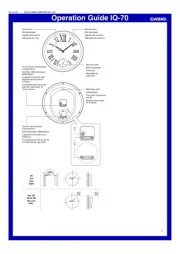
18 Juni 2025
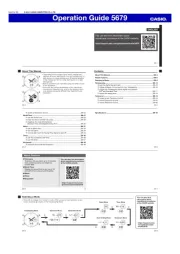
17 Juni 2025
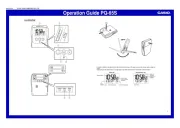
17 Juni 2025
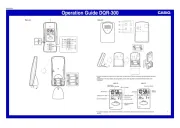
16 Juni 2025

16 Juni 2025
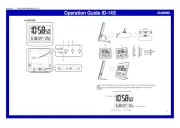
16 Juni 2025
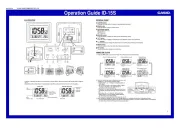
16 Juni 2025
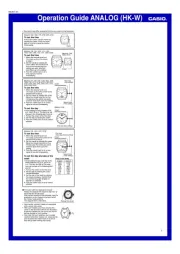
16 Juni 2025
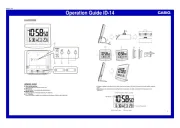
16 Juni 2025
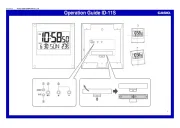
16 Juni 2025
Handleiding Horloge
- Emporio Armani
- TimeStyle
- Danish Design
- Polar
- Karlsson
- Fromanteel
- Akai
- Brera
- ETA
- HYT
- World Timer Chronograph
- Luminox
- Klaus Kobec
- Philip Watch
- X-WATCH
Nieuwste handleidingen voor Horloge

5 Juli 2025

5 Juli 2025

4 Juli 2025

4 Juli 2025

4 Juli 2025

4 Juli 2025

4 Juli 2025

2 Juli 2025
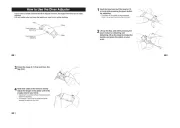
1 Juli 2025

21 Juni 2025